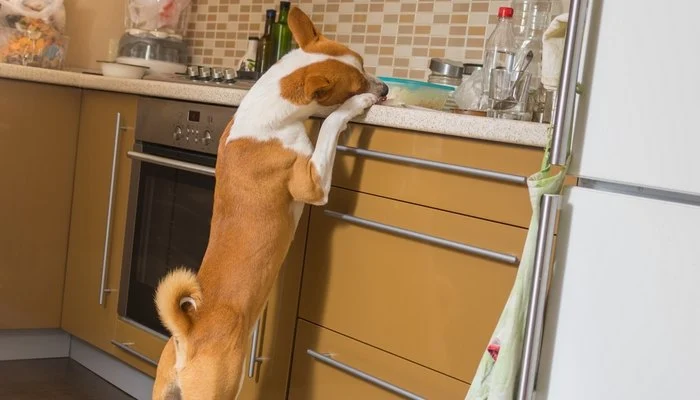
How to Pet-Proof Your Home: Safety Tips for Every Room
- Understanding the Importance of Pet-Proofing
- Pet-Proofing the Living Room
- Pet-Proofing the Kitchen
- Pet-Proofing the Bedroom
- Pet-Proofing the Bathroom
- Pet-Proofing Your Outdoor Space
- Final Tips for Comprehensive Pet Safety
1. Understanding the Importance of Pet-Proofing
As a pet owner, one of the most important things you can do is ensure that your home is safe for your furry friends. Pet-proofing your home helps prevent accidents, injuries, or toxic exposures, keeping your pets out of harm's way. Whether you have a playful puppy, a curious kitten, or an older pet, making your home a pet-friendly environment is essential for their well-being and your peace of mind.
Pet-proofing isn't just about securing dangerous items; it's also about creating spaces where pets feel comfortable and safe. It involves being proactive in eliminating hazards, and as every room of your home presents unique challenges, it’s essential to address each area with specific safety measures.

Irish Terriers & Things
EvansvilleVanderburgh CountyIndiana
5106 Helmuth Ave, Evansville, IN 47715, USA
2. Pet-Proofing the Living Room
The living room is where your pet spends a lot of their time, whether it’s lounging on the couch or playing with toys. However, there are a few potential hazards to be aware of:
- Furniture and Sharp Edges: If you have furniture with sharp edges or low tables, consider adding corner protectors to avoid accidents.
- Electrical Cords: Pets, especially puppies and kittens, love to chew on cords. Use cord protectors or hide cables behind furniture to prevent chewing.
- Pet-Friendly Furniture: Consider using pet-friendly fabrics that are resistant to scratching or easy to clean, as pets may have accidents or shed fur.
Creating a pet-friendly living room involves more than just removing potential hazards; it also means providing pets with their own space. A comfy bed, designated toys, and plenty of room to move around will ensure your pet is both safe and happy in the living room.

Vetco Vaccination Clinic
LouisvilleJefferson CountyKentucky
12695 Shelbyville Rd, Louisville, KY 40243, USA
3. Pet-Proofing the Kitchen
The kitchen is one of the most hazardous areas in the house for pets due to the presence of sharp objects, hot surfaces, and food that can be toxic to animals. Here’s how to make your kitchen safer:
- Secure Trash Cans: Keep trash cans covered and out of reach, as pets often try to rummage through them for food scraps, which can lead to digestive problems or worse.
- Store Dangerous Foods Safely: Many common foods like chocolate, grapes, and onions are toxic to dogs and cats. Store these in cabinets or on high shelves that your pet can’t access.
- Lock Away Cleaning Supplies: Household cleaning products, such as bleach, are toxic to pets. Use childproof locks on cabinets to keep cleaning supplies safely stored away.
To ensure your pet’s safety, make sure they never have access to the kitchen counters and always supervise them when you're preparing food. Establishing boundaries around the kitchen will help avoid any potential accidents.
4. Pet-Proofing the Bedroom
Your bedroom should be a safe space for both you and your pet. However, there are a few considerations to keep in mind:
- Remove Small Objects: Pets, especially puppies and kittens, may chew on small objects like socks or slippers. Keep personal items off the floor to avoid choking hazards.
- Check Bed Safety: If you let your pet sleep on your bed, be mindful of any blankets or bedding that may have loose threads or small items that could be ingested.
- Secure Electrical Items: Keep any electrical items like lamps or alarm clocks off the floor where pets may chew on the cords.
Additionally, consider creating a designated pet bed or space for your pet in the bedroom. This will give them a comfortable and safe place to rest without the risk of accidentally chewing on something harmful.
5. Pet-Proofing the Bathroom
The bathroom contains numerous hazards for pets, from cleaning products to slippery floors. Here are some tips to pet-proof your bathroom:
- Lock Away Medicines and Cleaning Products: Store all medications, toiletries, and cleaning supplies in cabinets with childproof locks to keep them out of reach.
- Secure Toilets and Trash Bins: Keep toilet lids down and trash bins secured, as pets might be curious about what’s inside, including harmful waste or food scraps.
- Non-Slip Mats: If your pet spends time in the bathroom, use non-slip mats to prevent slips and falls, especially in the bathtub or on the wet floors.
Additionally, always supervise your pet in the bathroom to avoid them chewing on items like toilet paper rolls or other small objects they may find interesting.
6. Pet-Proofing Your Outdoor Space
Your pet’s safety should extend to the outdoors as well, especially if you have a yard or garden. Here’s how to pet-proof your outdoor space:
- Secure Fencing: Ensure your fencing is tall enough and free of gaps that could allow your pet to escape. Consider installing pet-proofing mesh or additional locks on gates.
- Remove Toxic Plants: Many outdoor plants are toxic to pets, such as lilies, daffodils, and azaleas. Remove or replace these with pet-safe plants.
- Keep Dangerous Items Out of Reach: Store gardening tools, chemicals, and fertilizers in a locked shed or cabinet to prevent accidental exposure.
If you’re unsure about which plants are safe for pets or need more outdoor safety tips, consulting with a veterinarian or pet expert is a good idea. Keeping your outdoor space secure and safe can help your pet enjoy fresh air without the risk of danger.
7. Final Tips for Comprehensive Pet Safety
Pet-proofing your home is an ongoing process that ensures your pets can enjoy their environment safely. In addition to the room-specific tips above, here are some general guidelines to keep in mind:
- Vet Visits: Regular veterinary check-ups will help ensure your pet is healthy and free of potential medical hazards.
- Interactive Toys: Provide plenty of safe, stimulating toys to keep your pet occupied and prevent them from engaging in destructive behaviors.
- Monitoring: Always supervise your pet in areas that may have new hazards, especially when introducing new objects or changes in the home.
For more pet-proofing tips or to find products that will make your home safer for your pets, visit Pet & Puppy, where you can find a wide range of pet-friendly items that ensure your pet’s safety and comfort.


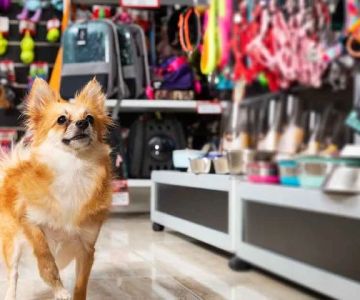
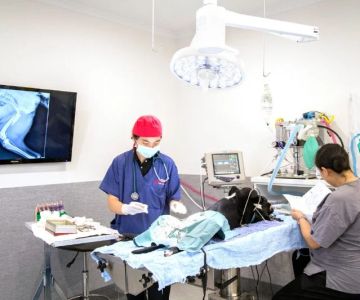
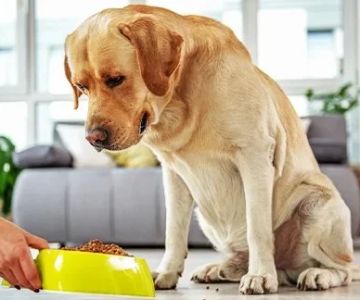
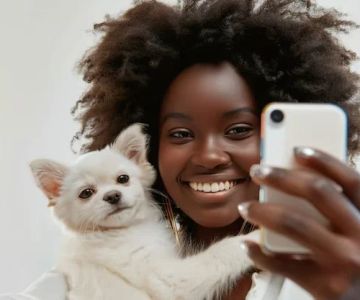
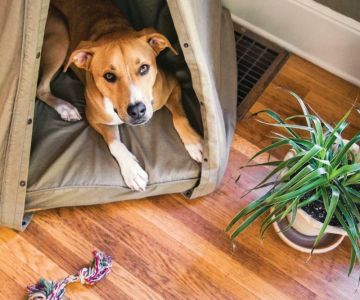
 1214 Central Store0.0 (0 reviews)
1214 Central Store0.0 (0 reviews) Burlington Pet Hospital4.0 (118 reviews)
Burlington Pet Hospital4.0 (118 reviews) ArkVets4.0 (426 reviews)
ArkVets4.0 (426 reviews) Hartzell Veterinary Service: Charles W. Hartzell, DVM and Sue Ann Hartzell, DVM4.0 (105 reviews)
Hartzell Veterinary Service: Charles W. Hartzell, DVM and Sue Ann Hartzell, DVM4.0 (105 reviews) Noah's Ark Animal Hospital4.0 (163 reviews)
Noah's Ark Animal Hospital4.0 (163 reviews) Jasper Pet Clinic4.0 (285 reviews)
Jasper Pet Clinic4.0 (285 reviews) Transitioning Training Methods as Pet Ages: Adapting Techniques for Senior Pets
Transitioning Training Methods as Pet Ages: Adapting Techniques for Senior Pets How to Read & Understand Pet Nutrition Labels for Your Pet's Health
How to Read & Understand Pet Nutrition Labels for Your Pet's Health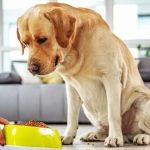 How to Choose the Right Pet Supplement Brand: Essential Tips for Pet Owners
How to Choose the Right Pet Supplement Brand: Essential Tips for Pet Owners How Much Should You Feed Your Pet? Portion Guide by Age & Breed
How Much Should You Feed Your Pet? Portion Guide by Age & Breed How to Create a Pet Health Journal: Metrics to Track for Better Pet Care
How to Create a Pet Health Journal: Metrics to Track for Better Pet Care What Breed-Specific Health Issues You Should Be Aware Of
What Breed-Specific Health Issues You Should Be Aware Of